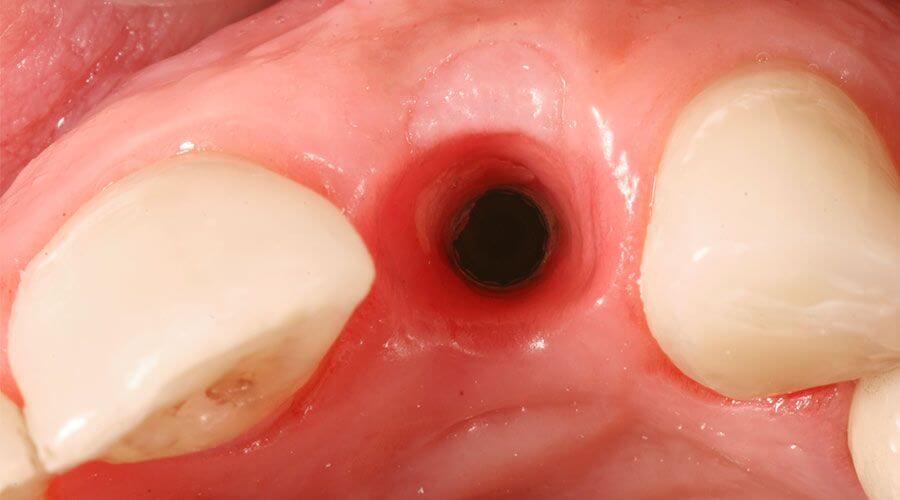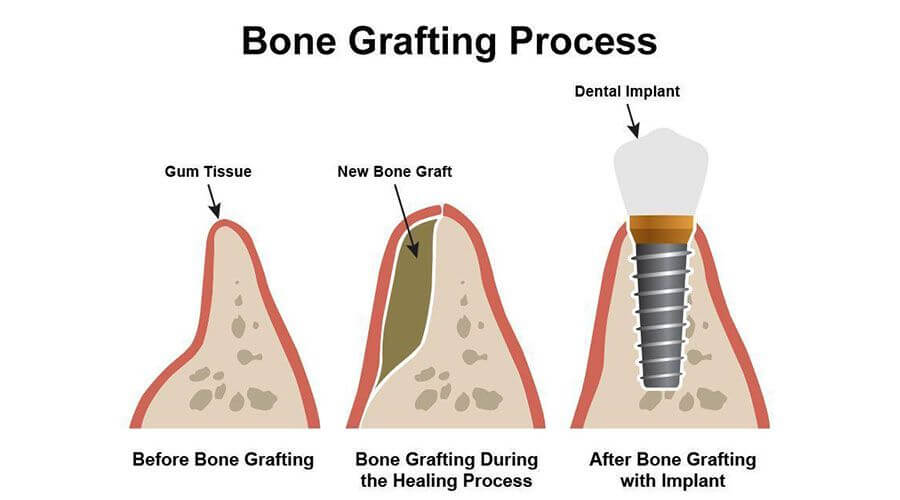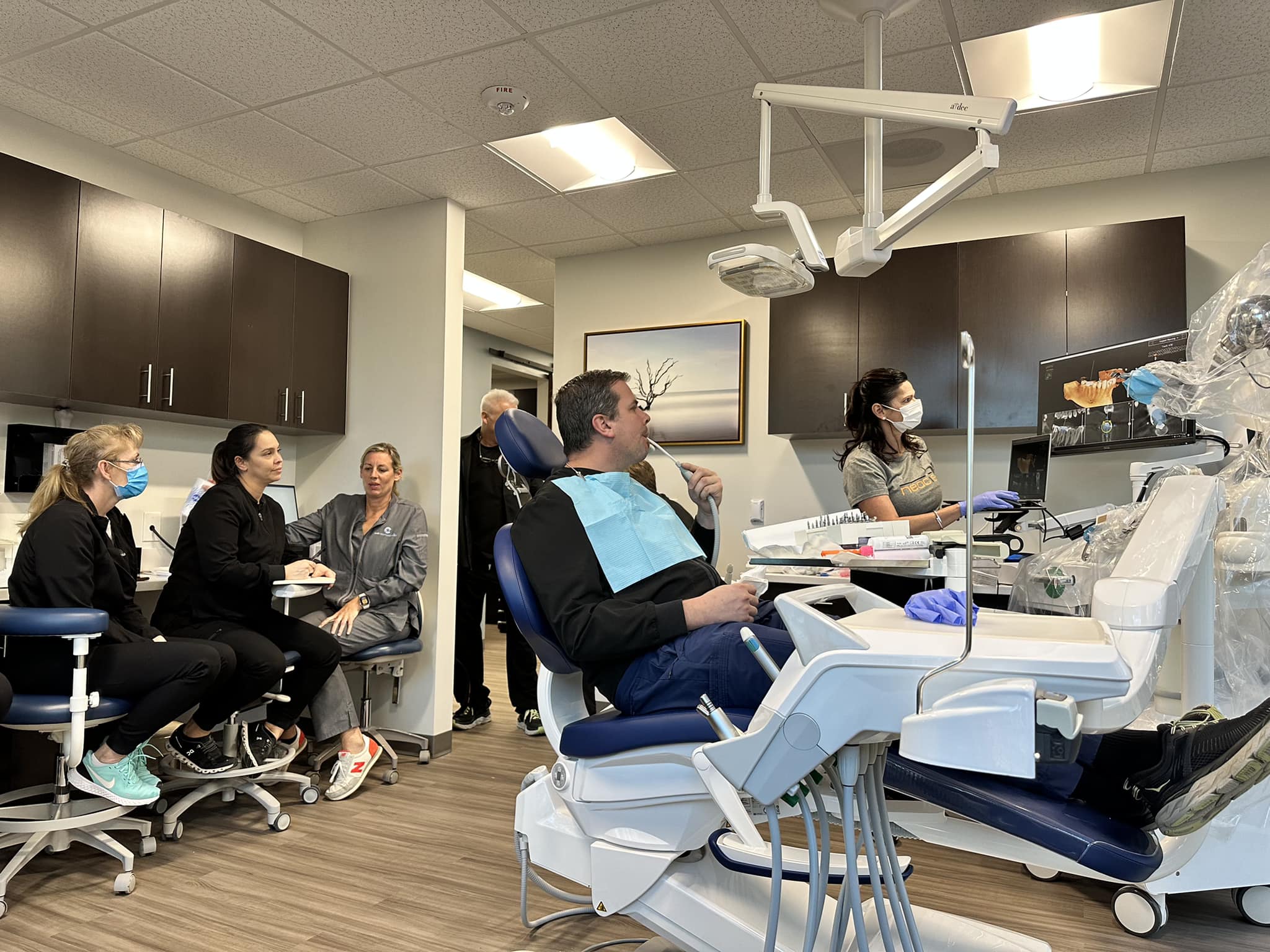Socket Preservation
Socket preservation, also known as alveolar ridge preservation, is a common dental procedure designed to preserve the empty space left following an extraction. After a tooth has been removed, the bone that supported the tooth will eventually resorb, or deteriorate. In pronounced cases, this can lead to further tooth loss and visible changes in the cheeks and lips that result in a prematurely aged appearance. The empty space can also cause surrounding teeth to shift out of alignment. Shifting teeth compromise a balanced bite, which can result in the development of temporomandibular joint (TMJ) disorder, teeth grinding, and enamel erosion, fractures, or breakage. The main purposes of socket preservation are to minimize the potential for shifting teeth and to preserve the integrity of the bone tissue for future dental implant placement.
Who Should Undergo Socket Preservation?
Anyone who has a permanent tooth extracted should consider socket preservation. The procedure can preserve healthy bone density and quality, as well as proper dental occlusion. If the patient undergoes dental implant surgery in the future, prerequisite bone grafting will likely not be necessary. Patients who choose a traditional restoration can also benefit. Retaining proper bone mass in the jaw can ensure proper dental function and health, as well as a more youthful appearance.

Socket preservation can protect the health of your jaw and your entire smile following the extraction of a permanent tooth.
Techniques and Procedures
Several techniques and types of grafts can be used during the socket preservation procedure. To begin, a dentist or specialist will administer local anesthesia. When the procedure is performed in conjunction with an extraction, the area will already be numbed. Once the socket is exposed and cleaned, a membrane will be inserted to isolate the treatment area. This will prevent surrounding tissue from adhering to the site and generating new gum tissue. The barrier also prevents bacteria from spreading to the area, which could cause infection. The membrane may be derived from animal sources, which is then used to make collagen, or it may be made of a synthetic material.
Socket preservation can prevent shifting teeth and further tooth loss, and preserve the integrity of the bone tissue for future dental implant placement.
Following placement of the membrane, the dentist will insert a bone graft into the socket. There are many graft types, including:
- Autograft: Bone from the patient’s own body
- Xenograft: Bone from an animal source
- Allograft: Donor bone
- Alloplast: A synthetic material that resembles bone, such as tricalcium phosphate

Bone grafting can replace receded jawbone tissue in preparation for dental implants.
Aftercare and Preparing for Restoration
Immediately following tooth extraction and socket preservation, you should avoid brushing the surgical site for at least 24 hours. Cold packs can be applied to the cheek to minimize swelling in the area. You may be provided with prescription medication or advised to use over-the-counter anti-inflammatories to help manage any pain. Before leaving the office, you should receive detailed after-care instructions concerning foods to avoid and other tips.
Reducing the Risk of Dry Socket
After tooth extraction, a blood clot will form at the site which protects the nerve and promotes healing. If the clot becomes displaced by chewing, brushing, suction, or trauma of any kind, a dry socket can develop. To reduce the risk of dry socket, the patient should avoid smoking, drinking from a straw, drinking carbonated beverages, and swishing fluids around the mouth. Apart from a change in the appearance of the surgical site, dry socket can be accompanied by pain, bad breath, and an unpleasant taste in the mouth. If dry socket does occur, contact your dentist immediately.
Implant Placement
As the socket and jaw heal, new bone will regenerate and create a solid foundation for a dental implant. Generally, the dentist will allow at least four months for healing before placing a restoration. In rare instances, an implant may be placed at the same time the socket is preserved. Even a preserved socket will not last indefinitely. Without stimulation from dental roots or an implant, the bone will continue to atrophy. The dentist will usually place the restoration within 12 months of socket preservation for the best possible outcome. Once one or more implants have been placed, the area will typically need to heal for another four to six months before a permanent crown, bridge, or denture can be attached.
Protect and Restore Your Smile
Performed by a skilled dentist or oral surgeon, socket preservation is typically an effective procedure. Although your doctor will always try to save a natural tooth, in some cases, extraction is the best way to restore your oral health. Timely extraction, socket preservation, and implant placement can protect the health and appearance of your smile for years to come.
Cary Prosthodontics
Cary Prosthodontics was founded in 1991 to provide the finest care to residents of Cary, Raleigh, Apex, Holly Springs, Fuquay-Varina, Morrisville, and surrounding areas. Our compassionate and caring prosthodontists are members of a number of professional associations, including:
- American College of Prosthodontics (ACP)
- Academy of Osseointegration (AO)
- International Team for Implantology (ITI)
Visit Our Top-Rated Office
Are you looking for a dental practice you can trust to provide high-quality care? Our office is regularly rated five stars for the professional and friendly care we provide to our patients. To meet with one of our dentists and start your dental crown process, fill out our online form to request your consultation. You can also contact us by calling our office, serving Cary and Raleigh, NC, at:

The Proof is in Our patients
Linda D.
Read More
Staff is professional but caring, more so than other medical offices I’ve been to. When you walk in they actually greet you by name. They remember details of your previous visits, which speaks to a great office staff. And Dr. Lim does his best to see that you have a good outcome. Thanks to all!
Joyce Th.
Read More
Was treated with so much respect from the Dr. and staff. I’m a very nervous person when it comes to having dental work done I can’t help it, but they made feel so comfortable so easy to explain to let them know why I was there. I couldn’t wait to tell my family and friends. Thanks
Jennifer Y.
Read More
Yet again, an EXCELLENT visit with Dr Koffard. The staff are so thoughtful and welcoming, professional and knowledgeable and I really appreciate the lightness of the spirit in the entire office; not to mention Dr Koffards’ effervescent nature. Thank you again for taking such good care of me. Oh! And congratulations on the new, roomy office space! It’s beautiful!
Megan F.
Read More
My doctor and the nurse were absolutely amazing . i have bad anxiety when it comes to mouth operations and they walked me through every step, everything was super quick and easy. I wish there was another way to thank the ladies who worked on me bc i have never been so comfortable.
Previous
Next
Our Office
Monday
7:30 AM - 3:30 PM
Tuesday
7:30 AM - 3:30 PM
Wednesday
7:30 AM - 3:30 PM
Thursday
7:30 AM - 3:30 PM
Friday
Closed
